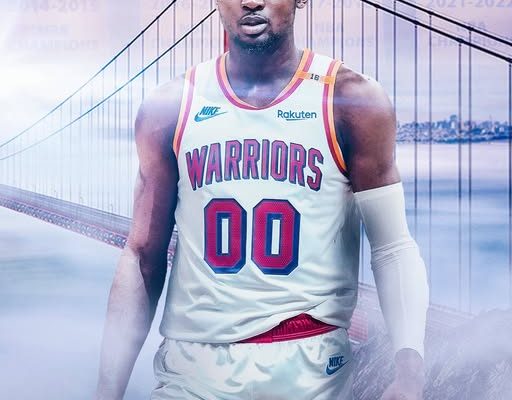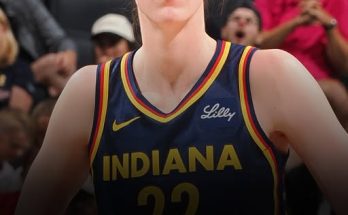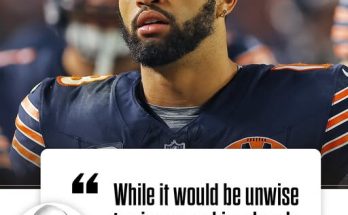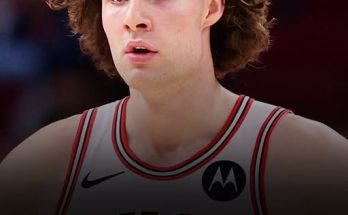Jonathan Kuminga’s decision to rebuff the idea of a Warriors reunion while planting his flag on a $30 million-per-year valuation is as much an economic statement as it is a basketball one, a declaration that his timeline, his ceiling, and his leverage no longer fit comfortably inside Golden State’s aging competitive window. It lands at the intersection of an unforgiving new CBA, a tightening marketplace for non-star restricted free agents and young wings who haven’t yet proven they can be primary or even clear No. 2 options, and a franchise that still publicly talks about chasing contention while privately threading needles of cost, chemistry, and identity. For Kuminga, the number isn’t merely about cash; it’s about role, autonomy, and the validation that he’s a foundational piece rather than an accessory to Stephen Curry’s twilight push. For the league, his stance is a litmus test of how teams are going to price upside in a market that increasingly punishes mistakes and middle-ground bets.
The first layer of the story is the Warriors themselves. Golden State’s books have been swollen for years, a legacy of max extensions, second-apron tax penalties, and the organizational desire to give the core of Curry, Klay Thompson, and Draymond Green every possible shot at one more title. That approach left very little margin for developmental patience. Kuminga, despite tangible progress as a driver, finisher, and switchable defender, often found himself swinging between stretches of trust and long fourth-quarter benches, a victim of Steve Kerr’s instinct to ride veterans who understood the read-and-react ballet that made the Warriors dynasty hum. From Kuminga’s vantage point, that role volatility undercut his negotiating posture. If the franchise couldn’t consistently guarantee him volume, touches, and on-ball reps during his rookie-scale deal, why should he settle for a number that reflects a capped role when he thinks his game is just starting to stretch beyond the confines of Golden State’s system?
The second layer is the market. The NBA’s middle class has been squeezed by the second apron, which acts less like a soft luxury-tax deterrent and more like a hard strategic choke point. Teams that live above it lose tools to improve. Teams aspiring to contention beneath it have become choosier, preferring either sure-thing, top-20 star salaries or cost-controlled rookie deals and bargain, one-year vet minimums to fill gaps. Players like Kuminga sit awkwardly between those poles: high-upside, not yet fully formed, too expensive to be a flyer, not proven enough to be a franchise’s second-best player in a playoff series. The result is a stalled market where his camp’s $30 million-a-year figure, which can be rationalized by comping him to other young wings who eventually blossomed into two-way forces, meets front offices who are terrified of giving mid-tier star money to a player who still projects — rather than presents — star-level impact.
Kuminga’s ask, though, isn’t irrational in a vacuum. Cap percentages matter more than raw dollars, and the league’s revenue growth means that contracts once considered gaudy now age into reasonable deals by year three. If a team believes his trajectory points toward consistent 18-to-20-point scoring on league-average efficiency with plus defense against 2-through-4s, $30 million could easily sit within the acceptable band for a starting-caliber forward on a playoff team, especially one who can toggle between small-ball five lineups and slashing, secondary-creator lineups. But that belief requires organizational alignment: a coach willing to live with mistakes as he explores his off-the-dribble arsenal, a front office confident the shot will stabilize around 36 to 38 percent on volume, and a locker room ready to orient some possessions around him as a driver rather than purely a play-finisher.
The difficulty for the Warriors is philosophical as much as financial. Curry’s presence imposes a win-now cadence that makes player development feel like a luxury. Every possession not oriented around maximizing Curry’s gravity can feel like a tax on the title chance. That tension isn’t new — it shadowed the James Wiseman experiment and lurked behind Jordan Poole’s rise and abrupt exit — but with Kuminga it’s sharper because his two-way promise so clearly fits a modern playoff template. Yet modern playoff templates also demand reliability, and Golden State rarely trusted Kuminga as a primary decision-maker in high-leverage moments. His camp knows this film, these rotation patterns, and the inevitable DNPs in critical crunch-time minutes. The conclusion is simple: if he’s going to sacrifice control and patience somewhere, he might as well get paid top dollar for the sacrifice. If he’s not going to get paid that number, he wants somewhere that will give him the canvas to paint.
Other teams, though, have their own calculus. A $30 million yearly commitment to a still-developing forward is defensible if you’re a franchise in the middle stage of a rebuild with clean books and a need for a physical, athletic wing who can run, switch, and punish mismatches. It’s less defensible if you’re a contender, already pressed against the tax, who would need Kuminga to fit perfectly within a rigid offensive structure where his ball-stopping tendencies and streaky jumper could be a problem. The stalled nature of the market suggests that most teams reside in the latter camp — or are at least waiting to see whether the price will fall as the musical chairs run out. Waiting, of course, is also a negotiation tactic; the later it gets, the more pressure theoretically shifts to the player. But that dynamic can boomerang if a surprise suitor with cap space or a creative sign-and-trade blueprint decides to pounce, exploiting the collective hesitation.
Sign-and-trade possibilities complicate things further. The Warriors, in theory, could extract value for a player they’re unwilling to meet at $30 million AAV, but the second apron has turned sign-and-trades into minefields. Aggregating salary, taking back long-term money, and keeping flexibility are all thorny. Golden State would prefer expiring deals or young, cheaper players with upside, but teams paying Kuminga that rate won’t be excited to cough up cheap upside on top. That pushes the conversation toward multi-team constructions, delayed compensation, or draft capital swaps that try to thread the needle for everyone. Every layer added to the deal increases the risk it collapses under its own weight, which again incentivizes both sides to hold their position and see who blinks first.
Kuminga’s bet is also a bet on broader stylistic trends. The league today is defined by jumbo creators and rangy, switchable defenders who can punish mismatches without compromising spacing. If he can credibly hit above-the-break threes, attack closeouts, and toggle between guarding big wings and small-ball centers, he becomes the kind of playoff-quality piece teams spend years chasing. His explosiveness downhill, especially in early offense, is already a weapon; the question is whether the decision-making speed, the passing windows, and the defensive rotations can reach the consistency demanded by May and June basketball. If you think the answer is yes, $30 million is a down payment on future surplus value. If you think the answer is no, it’s a self-imposed cap choke that crowds out flexibility for the next four years.
There’s also a human element. Kuminga arrived in Golden State as a raw athlete in a veteran-dominated ecosystem that can calcify roles. Confidence is currency for young players, and asking the player to cut, screen, and park in the corner while endlessly toggling between “go prove it” and “don’t make a mistake” is a hard way to grow. Players want their organizations to believe in their star outcomes, not just their role-player floors. Declaring a $30 million target is a way of saying: I am not your energy bench forward; I am your future cornerstone. That message hits differently in a locker room built on the egalitarian joy of 300 passes per game. But it resonates with franchises looking for a wing to headline the next chapter of their rebuild.
From the Warriors’ vantage point, the harshest truth might be that they cannot afford both the cost and the patience. Curry’s clock is ticking. The avenues to improve around him are constrained. If they balk at Kuminga’s price, it won’t just be sticker shock; it will be an admission that their path to another title runs through veterans who can instantly translate off-ball movement and scheme flexibility, not through the uncertain yield of a 22-year-old who may need a year of high-usage mistakes to unlock his ceiling. They could still hope for a compromise, a descending structure, or heavy incentives tied to games played, shooting percentages, and playoff benchmarks. But those are concessions a player with options rarely embraces, and even if he did, incentives don’t fully solve the philosophical rift about role and trust.
Meanwhile, the clock on the market keeps ticking, and with it, the risk calculus for both parties shifts. For Kuminga, lingering unsigned or under-signed carries a reputational risk — that teams begin to see him as overvaluing himself or being difficult to fit. For the Warriors, standing pat risks losing a valuable asset for less than peak return, or worse, reintegrating a disgruntled player at a number that strains the books and the rotation. The invisible pressure point is another surprise: injuries, trades, or failed summer plans elsewhere that suddenly create a need for an athletic forward with upside. One phone call can change a market narrative that felt frozen for weeks.
Ultimately, this standoff is a microcosm of where the NBA is headed. The second apron forces clarity: either you’re paying for certainty, or you’re paying a discount for developmental risk. Teams have been burned enough by in-between deals to be wary. Players, especially those who have felt their growth constrained, are empowered enough to say “bet on me or let me walk.” Kuminga’s insistence on $30 million per year is a dare to the league to place a chip on a still-forming star. The Warriors’ hesitation is a dare back: prove you are that star somewhere else or prove it on a number that protects our flexibility. Somewhere between those two dares, a resolution will surface — a sign-and-trade, a creative contract structure, or a pivot to a team willing to hand him the ball and the bag. Until then, the figure itself will hang over both parties, a price tag and a thesis statement on what Jonathan Kuminga believes he is, and what Golden State, and the league at large, are prepared to pay to find out.



